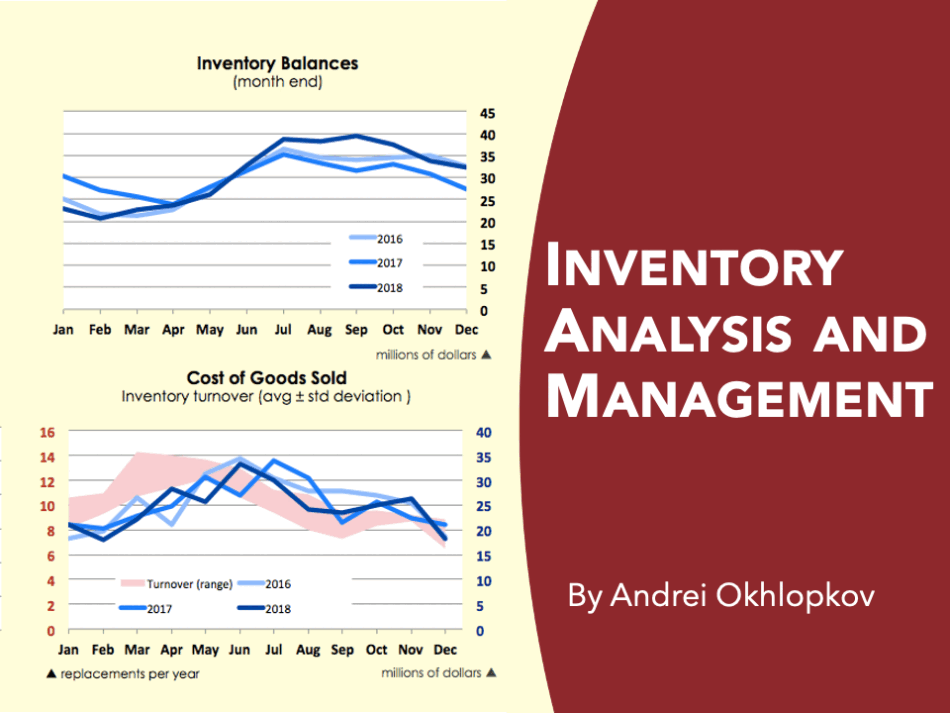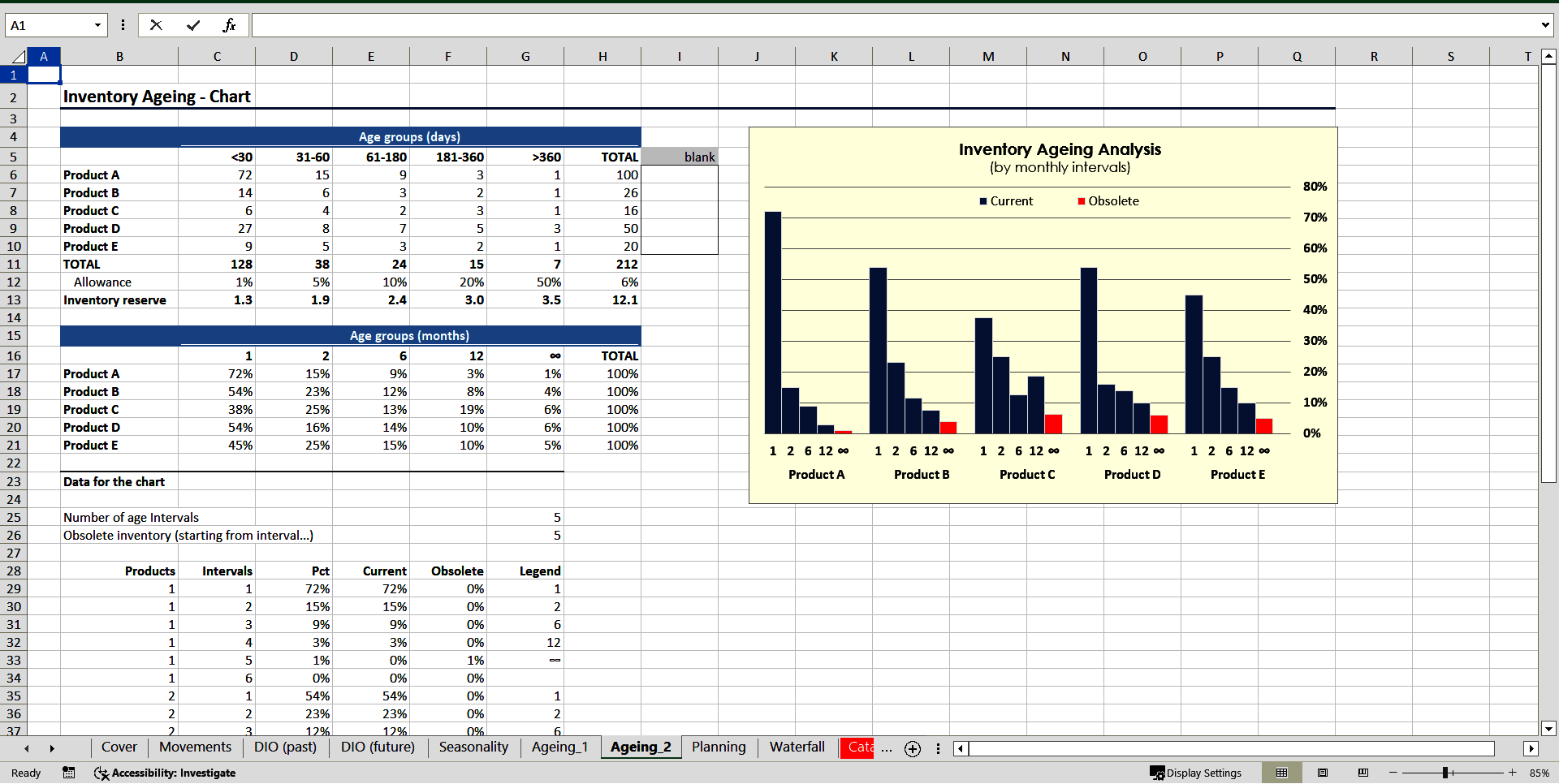Inventory Analysis and Management (Excel XLSX)
Excel (XLSX) + supplemental PDF
BENEFITS OF THIS EXCEL DOCUMENT
- A professionally designed suite of best practices to perform inventory analysis
- A comprehensive resource to manage inventory in stock
- Produces detailed outcome analysis and charts
INVENTORY MANAGEMENT EXCEL DESCRIPTION
This set of tools explains how to analyze inventory, communicate findings of your analysis and make practical use of them. The main areas covered by the analysis are:
1. Understand what drives your inventory balances. This includes analyzing the movements of inventory by product and seeing which products affected the change to the largest extent. This analysis includes a horizontal waterfall showing the changes graphically.
Inventory balances are reduced by the sales and increased by the purchases. There is another visual tool, also based on horizontal waterfall chart, showing the effect of these two factors and giving an idea of how total inventory flows compare to inventory balances.
2. Days Inventory Outstanding. Unlike many other calculations which take inventory balance at some date and COGS (or revenues) in that period, I am using a formula taking the actual COGS in prior (or subsequent) periods and returning the actual number of days covered by the inventory balance. Writing this formula is clearly an Excel challenge which is solved in a smart way using the OFFSET, MMULT and other functions.
I am giving two alternative calculations here: based on past and future sales.
3. Inventory seasonality – many business are prone to seasonal changes in sales which affects inventory balances, turnover and cost of sales.
4. Ageing of inventory – this part explains how to transform inventory list into ageing groups, calculate inventory reserve and demonstrates inventory balances by products and by age groups in a professionally designed chart.
5. Planning orders taking into account inventory requirements and delivery time.
Many of the methods used in this publication can be applied to other types of financial analysis (e.g. making aging of accounts receivable, planning cash receipts based on sales payment terms).
As a bonus tip, the publication explains in detail how to create a horizontal waterfall chart. This is a smart and efficient type of chart visualizing variances between the numbers. It will surely make your presentations look professional and your reports – impress your clients, managers and colleagues. This chart is compatible with all versions of Excel.
Got a question about the product? Email us at support@flevy.com or ask the author directly by using the "Ask the Author a Question" form. If you cannot view the preview above this document description, go here to view the large preview instead.
Source: Best Practices in Inventory Management Excel: Inventory Analysis and Management Excel (XLSX) Spreadsheet, Andrei Okhlopkov









